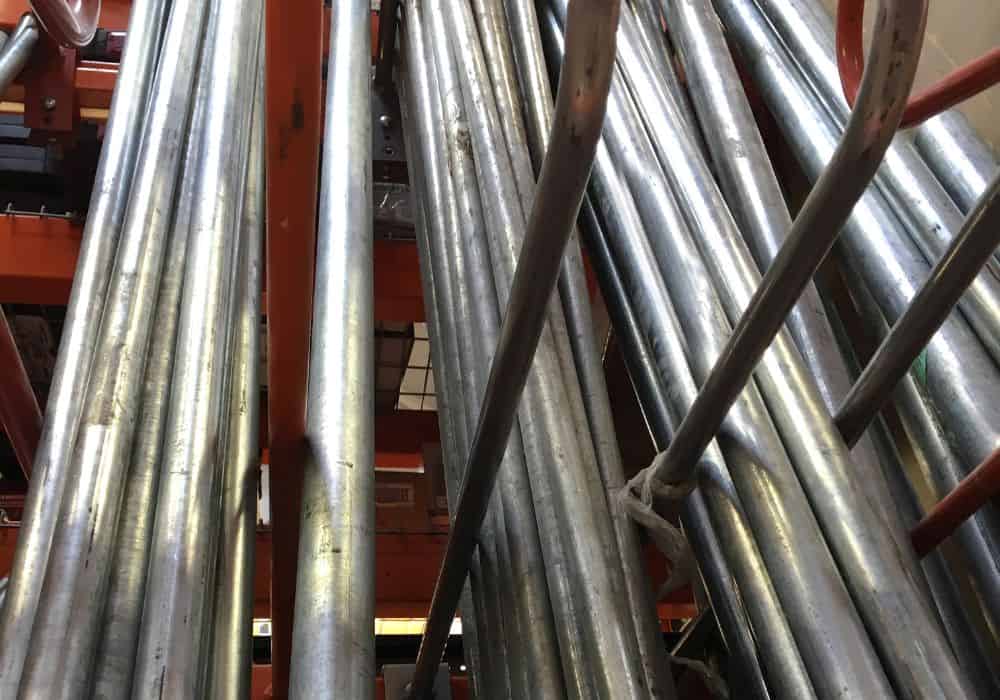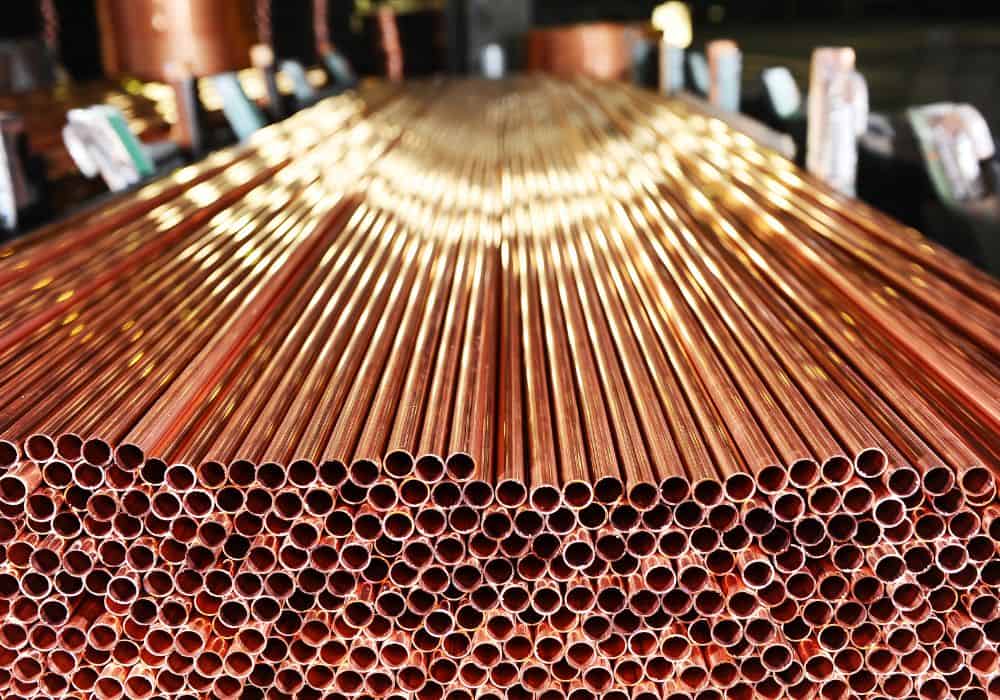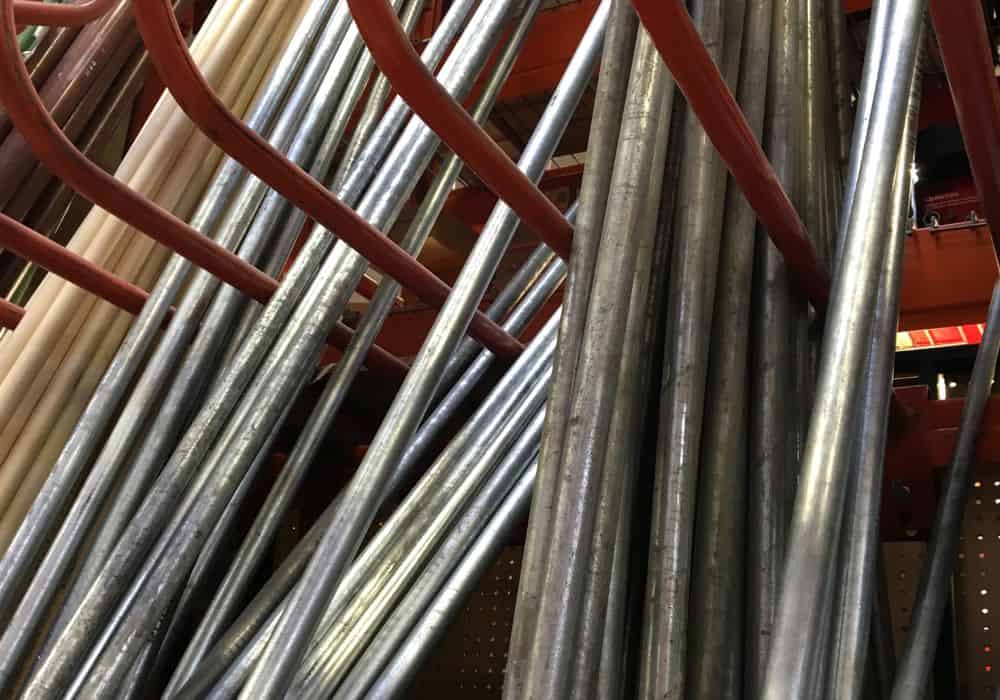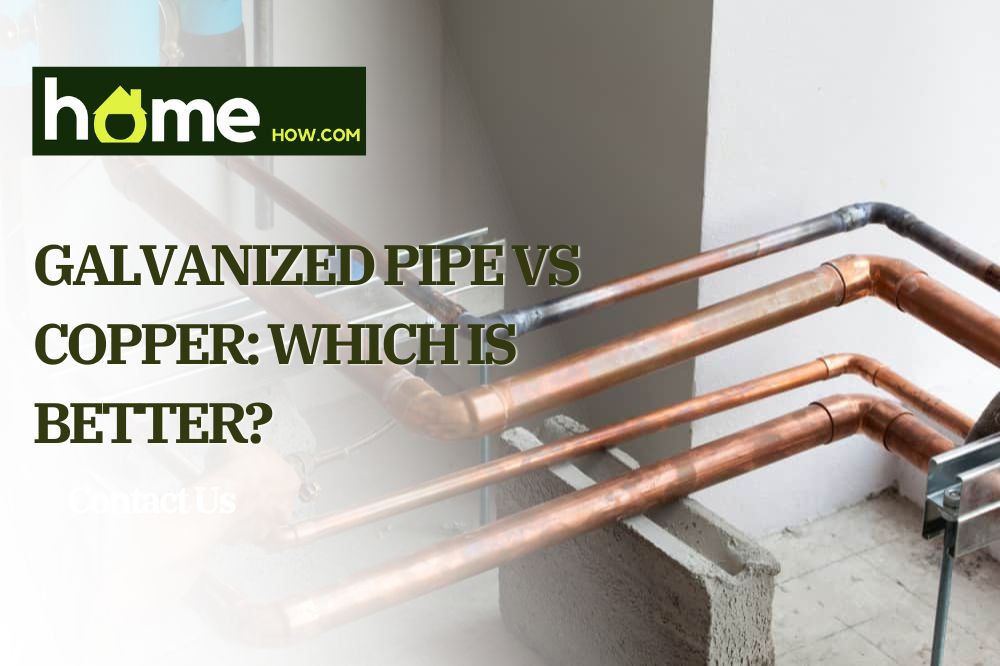Choosing a suitable plumbing pipe is imperative for the optimum performance of your plumbing system. While galvanized and copper pipes are commonly used in plumbing works, these types are pretty different from each other.
Here’s a comparison of these two types of plumbing pipes and their pros and cons to make your search more straightforward and hassle-free.
To decide between galvanized and copper pipe, it’s crucial to understand these pipes’ features and their best-case uses to make an informed decision.
Galvanized Pipes

Steel pipes undergo the process of galvanization, creating a protective zinc coating all over the pipe. These zinc-coated pipes are referred to as galvanized pipes. The coating improves the pipe’s longevity by keeping corrosion and rust at bay.
These pipes were introduced explicitly for water lines as lead pipes affected the water’s quality, leading to lead contamination. The zinc coating wears off over time, resulting in rust build-up and water discoloration. The corroded metal bits can flake off in the water, rendering it undrinkable.
A rusty galvanized pipe in a cold region will eventually leak or burst when water freezes inside them. Nowadays, galvanized pipes are not commonly used, yet you can find these installations in older homes.
Pros
- The life expectancy of galvanized pipes is up to 40 years, making it a long-lasting option.
- The zinc coating prevents corrosion more than conventional steel or iron pipes.
- Suitable for irrigation systems, sewage plumbing, handrails, and well casings.
Cons
- Drinking water from rusty and corroded pipes has adverse health effects due to the presence of toxic substances.
- Corrosion and rust can’t be identified early on as the pipe corrodes inside out.
- Galvanized pipes are thick and heavy, making them unsuitable for installation in compact spaces.
- Besides having a small diameter, these pipes corrode over time, resulting in low water pressure and poor water flow.
Copper Pipes

These pipes have been a preferred choice for homeowners and contractors for indoor plumbing needs. Copper pipes are durable and have a long life, making them feasible for water supply lines.
Copper pipes are divided into four grades, each with varying uses.
1. Type K Copper Pipe
This type has the thickest diameter and is used for main water lines and underground plumbing installations. Due to their thickness, K copper pipes can withstand the water pressure from trenches generated due to backfilling.
It’s the most expensive type and is not recommended for interior water supply pipes.
These pipes are available in flexible or rigid forms, making them compatible with several applications.
2. Type M Copper Pipe
It’s the thinnest pipe of the four categories and is used to replace, repair, or extend the home’s water supply lines. M pipes are easy to cut and install, making them an excellent choice for DIY enthusiasts working on small plumbing projects.
It’s a budget-friendly option and the most preferred pipe for residential buildings. However, some areas don’t allow the M type for plumbing. Therefore, check in with the local authorities about installing copper pipes and restrictions, if any.
3. Type L Copper Pipe
The L type is best used for branching water supply lines in interior plumbing. Flexible L-type pipes can perfectly repair or replace worn-out pipes.
4. DMV Copper Pipes
These pipes are specifically designed for drainage and are now replaced by ABS plastic pipes.
Pros
- The most popular type among home builders for a home’s plumbing system has several applications.
- It lasts over 50 years, making it a preferred choice over galvanized pipes.
- Ideal for tight or compact spaces.
- The pipe doesn’t contain toxic materials like lead, making it a safer option than its counterparts.
- The pure copper surface prevents the colonization of microorganisms.
- Due to its ability to resist corrosion, copper pipes require fewer repairs and maintenance.
Cons
- Copper is an expensive material. Pipes made of copper will be costlier than galvanized steel or iron pipes.
- Copper can oxidize, leaving the water flowing through the pipes with a metallic taste.
- While the material works well against corrosion, hard water flowing through copper pipes can lead to corrosion, resulting in a pinhole leak.
- These pipes are prone to condensation and high temperatures. The condensation occurring within the pipes blocks the water flow.
Different regions have varying levels of minerals in the water. This mineral content determines the hardness of the water.
Areas having water with high mineral content like magnesium, calcium, and iron act as an abrasive, removing the zinc coating from the galvanized pipe, and resulting in corrosion.
Likewise, copper pipes also wear out due to high mineral content, resulting in a pinhole leak. Still, copper pipes are better than galvanized pipes due to their durability, long life span, and free of toxic substances.
It’s best to use a copper pipe rather than galvanized pipes for safe and effective results.
The Connection Between Galvanized Pipes And Lead Contamination

Most homeowners believe galvanized plumbing to be the reason for lead contamination. This is partially true, as a study conducted by Environmental Engineering Science found that zinc coating contains lead.
The lead contamination is further fueled by the partial replacement of lead and galvanized pipes in a supply system.
The corroded area inside the galvanized pipe starts accumulating toxic substances like lead. Therefore, it’s always advisable to opt for a complete replacement rather than partially replacing faulty pipes over time.
How To Know The Type Of Pipe Is Already Installed
Most homes built before the 1960s have a high chance of having galvanized pipes installed. If you’re unsure whether the metal pipe in your premises is copper or galvanized steel, here’s what to do.
- Scratch the pipe with a nickel (penny) or a screwdriver.
- If the surface turns out to be steel gray, like the nickel, it’s a galvanized pipe.
- Copper pipes are brown with a metallic surface.
You can also use a magnet as it will cling to a galvanized pipe’s surface, whereas a copper pipe won’t attract the magnet.
There’s no need to panic if you still can’t figure out the type. In situations like these, you can get assistance from a plumbing service for adequate identification.
How To Know Your Pipe Needs Repair Or Replacement?
Here are a few tips you can try to know whether you have a pipe leak:
- Ensure no water is running by turning off faucets and home appliances using water. This includes checking indoors and outdoors.
- Note down the reading from your water meter.
- Don’t use the water for at least three hours; recheck the reading.
- If you notice an increase in the reading, this confirms a pipe leak needs to be addressed.
Some other visible signs confirm a wall pipe leak:
- A persistent musty odor indoors.
- Fungus and mold growth on walls, baseboards, and other damp areas.
- Chipping or peeling of paint.
- Damp and water-stained walls.
- Warped ceilings or floors.
Keeping an eye on these signs as they can save you from paying the plumbing company hefty repair or replacement bills.
Other Types Of Pipes
Over decades, several materials like cast iron, lead, steel, concrete cement, asbestos cement, clay, and plastics have been used to make pipes for transferring water. In the early 1930s, lead pipes were commonly used and later replaced with galvanized steel.
PVC pipes are another type that’s easy to install and won’t break the bank. These plastic pipes are inert to corrosion and are the most preferred choice for drainage and waste disposal.
PVC pipes are durable but can crack or leak from extreme weather changes, impact, and extremely high water pressure.
The PVC’s glued ends can also wear off, resulting in a leak. These pipes don’t work well with hot water and may cause water contamination by releasing toxic chemicals like polyvinyl chloride. This chemical is linked to triggering respiratory and issues with the reproductive system.
There are several variations of PVC pipes, each having distinct qualities and drawbacks. Therefore, always research your options to make a feasible decision.
PEX pipes are more durable than PVC pipes and are designed to work for indoor plumbing. The material is resistant to heat and cold and can be bent around nooks and corners. However, freezing weather or direct sunlight can cause cracks and leaks, compromising its utility.
These pipes can last up to 100 years, are extremely strong, and aren’t affected by water treatment chemicals. However, UV rays from the sun or indoors can degrade PEX pipes, making them a poor choice for residential plumbing.
Bottom Line
While you cannot replace or repair faulty plumbing pipes, choosing the type of pipe is in your hands. While copper pipes are most commonly found in residential plumbing projects, materials like PVC, PEX, CPVC, and PVS are replacing copper pipes due to their affordability, durability, and longevity.
When comparing copper and galvanized pipes, it is recommended to opt for copper pipes as this type is comparatively safer for water supply, has a greater life span, and is easy to maintain. Being an expensive material, copper plumbing adds value to the property.
Most copper pipe manufacturers also give a warranty with the purchase, reducing the replacement cost. Lastly, ensure you are familiar with your plumbing requirements.
We hope the information presented here aids you in understanding the difference between galvanized steel and copper pipes.
